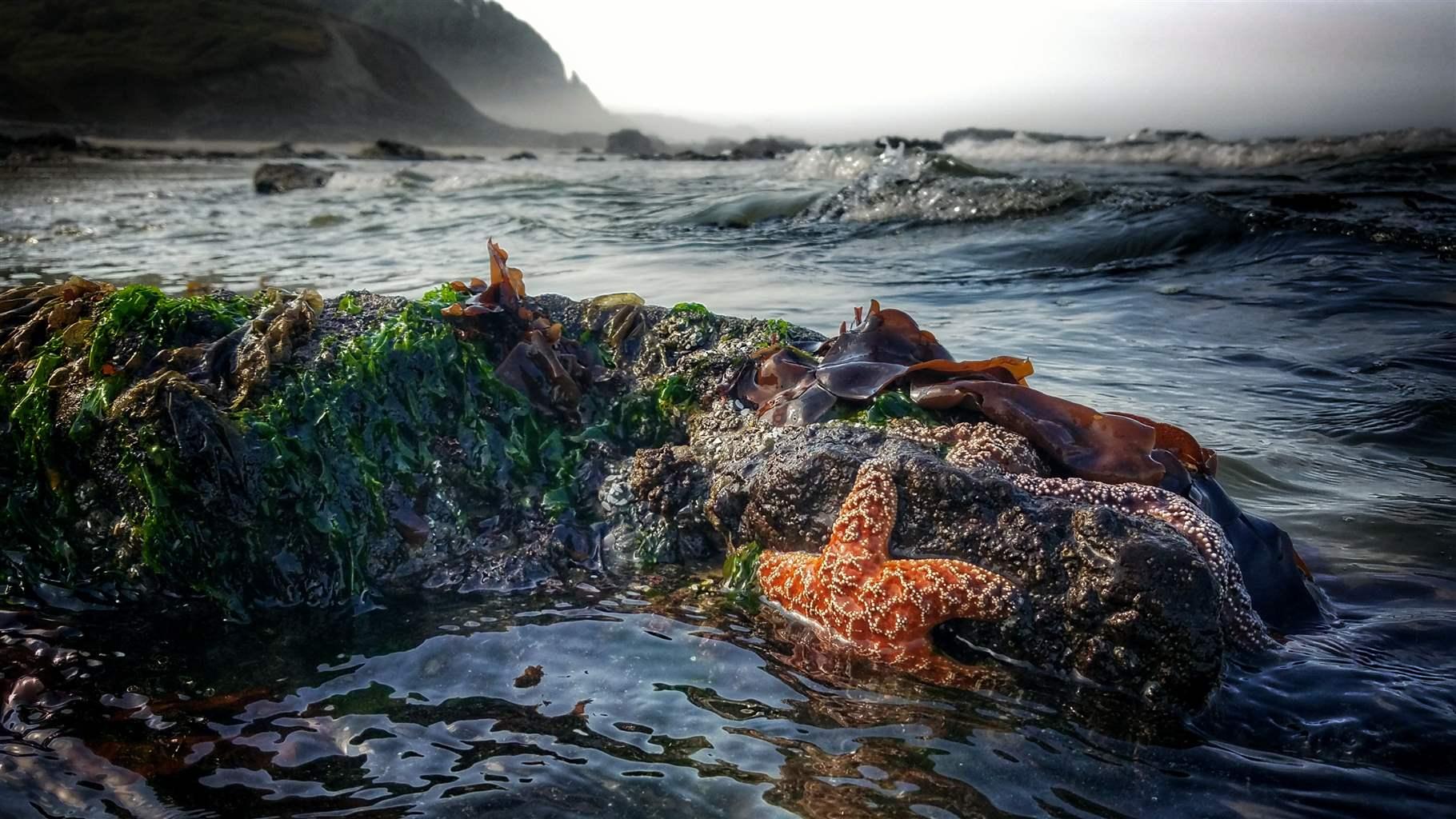Oregon’s Rocky Coast Needs Protection
The public will help shape management of the state’s tide pools, kelp forests, and sheer cliffs

Oregon’s tide pools, headland cliffs, offshore rocks and islands, and submerged reefs are awe-inspiring. These biologically rich habitats sustain seabirds, marine mammals, kelp, invertebrates, and fish, as well as the coastal communities nearby. For the first time since 1994, Oregon is updating its Rocky Shores Management Strategy, providing an opportunity to reaffirm the importance of these special places and protect them for future generations.
Oregon’s nearshore and intertidal rocky areas are used for a variety of recreation and educational activities. They account for millions of visits to Oregon’s coast each year, which help support the state’s coastal communities. Discovering a tide pool teeming with bright green anemones or orange sea stars is often someone’s first interaction with marine life. And scientists research rocky shore areas to gain a deeper understanding of our ocean ecosystems.









